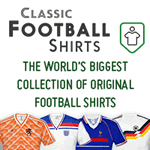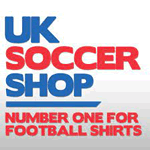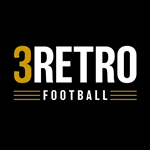Kit History
East End
Formed 1881 as Stanley

1882-1886
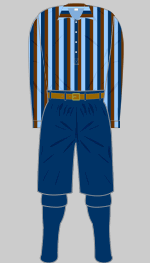
1886-1888

1888-1892

January 1892

1892-1894
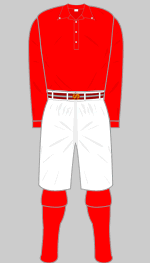
1894-1896

1896-1897

1897-1899

1899-1904

1904-1906

1906-1910
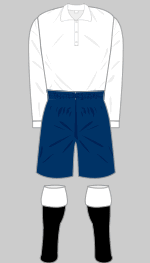
1910-1911

1911-1912

1912-1913

1913-1914

1918-1922

1922-1930

1930-1956

24 January 1931

8 January 1938

November 1957

1958-1959

1960-1961

1961-1966

14 Sept 1963

1965-1966 3rd

1966-1969

1966-1969 3rd

1967-1968 3

1969 EUR

April 1969

1969-1973 3rd

1973-1974 A

1973-1974 3rd

1974-1975 A

1975-1976 A

10 April 1976

1976-1980 A

1978-1980 3rd

1980-1983 A

1985-1986 A

1986-1988 A

1987-1988 3rd

1988-1989 A

1989-1990 A

1997-1998 A

1998-1999 A

1999-2000 A

2000-2001 A

2002-2003 A

2003-2004 3rd

2004-2005 3rd

2005-2006 3rd

2006-2007 A

2006-2007 3rd

2007-2008 A

2007-2008 3rd

2008-2009 3rd

2009-2010 A

2009-2010 3rd

2010-2011 3rd

Aug-Dec 2011 A

Jan-May 2012 A

Aug-Dec 2011 3rd

Jan-May 2012 3rd

2012-2013 A

2012-2013 3rd

2013-2014 A

2013-2014 4th

2014-2015 A

2014-2015 3rd

2014-2015 4th

2015-2016 A

2015-2016 3rd

2016-2017 A

2016-2017 3rd

2017-2018 A

2017-2018 3rd

2018-2019 A

2018-2019 3rd

2019-2020 3rd
Background
 In February 1882, according to the club's official historian Paul Joannou, reference was made to the East End team wearing a change strip of chocolate and blue stripes. A photograph dating from around this period has been unearthed by an HFK contributor in the course of his research shows a team wearing unusual striped shirts which was sold to him as being East End. It has not been possible to verify whether this is the case so the graphic I have included must be considered as provisional.
In February 1882, according to the club's official historian Paul Joannou, reference was made to the East End team wearing a change strip of chocolate and blue stripes. A photograph dating from around this period has been unearthed by an HFK contributor in the course of his research shows a team wearing unusual striped shirts which was sold to him as being East End. It has not been possible to verify whether this is the case so the graphic I have included must be considered as provisional.
Newcastle's famous black and white striped shirts were originally the team's change strip. According to Darrin Foss, the team was scheduled to travel to Nottingham to play Forest in January 1892 and there was a dispute over which team should change (both wore red shirts at the time). An appeal to the Secretary of the FA, CW Alcock resulted in an instruction that, as the senior club, Forest should play in their usual red so United borrowed a set of broad striped shirts from Notts County. United's reserves also wore black and white stripes (in a more conventional pattern) and these were used as a change strip until 1894 when they became the first choice. After this old shirts in red and later light blue (the former colours of East End) were pressed into service before plain white shirts were adopted in 1900.
Immediately before the First World War a black chevron was added to the white jerseys, an iconic style that was used until the late 1920s (or later - there is a large gap in our records).
In January 1951, Newcastle lent a set of "home" shirts to Sunderland, who were due to play Southampton in the FA Cup, which required both clubs to change in the event of a clash (both teams had white alternative tops so Southampton borrowed a set of amber shirts from the Hampshire Regiment FC).
In November 1957 Newcastle played a number of mid-week friendly games under improvised floodlights mounted on telegraph poles including a 3-1 defeat against Gwardia Warsaw. The reflective white strip with a bold black band was badly received and quickly retired. Within six months massive steel pylons were erected and proper floodlights installed.
In the late 1960s the team started to wear all-red with a dark-blue strip in reserve.
In 1974 Newcastle, along with many other clubs, adopted a replica of the Brazilian national team's famous gold, green and light blue kit, worn inexplicably with orange stockings during 1975-76. The theme was simplified to yellow and green in 1976, with blue replacing the green trim in 1980. Between 1983 and 1988 the team turned out in fashionable silver grey, following which green and yellow made its return.
From 1993 the club experimented with increasingly audacious designs starting with an all-blue outfit with an irregular white streaked pattern paired with a green third kit with navy candy stripes. When Adidas were awarded the kit supply contract in 1993, they designed a fine retro outfit in dark red and navy inspired by a strip worn by Newcastle West End in 1881. Although Newcastle usually retained their home kits for two seasons new away kits were unveiled every season ensuring that Toon fans were never short of a reason to spend their cash.
The 1997-98 offering was one of the most interesting designs, consisting of dark blue and olive green with orange trimmings. The 1999 all-white kit featured panels in "teal", one of many novel colours introduced around this time, and was used just once. 2001 brought a blue-grey strip with Adidas' trademark triple stripe trim.
Designers have been encouraged to give their imagination free reign in the new millennium.
Sources
- With acknowledgement to John Devlin's True Colours Vol 1 (ISBN 0 7136 7389 3)
- A = Away (change) kit
- 3rd = Third choice kit

